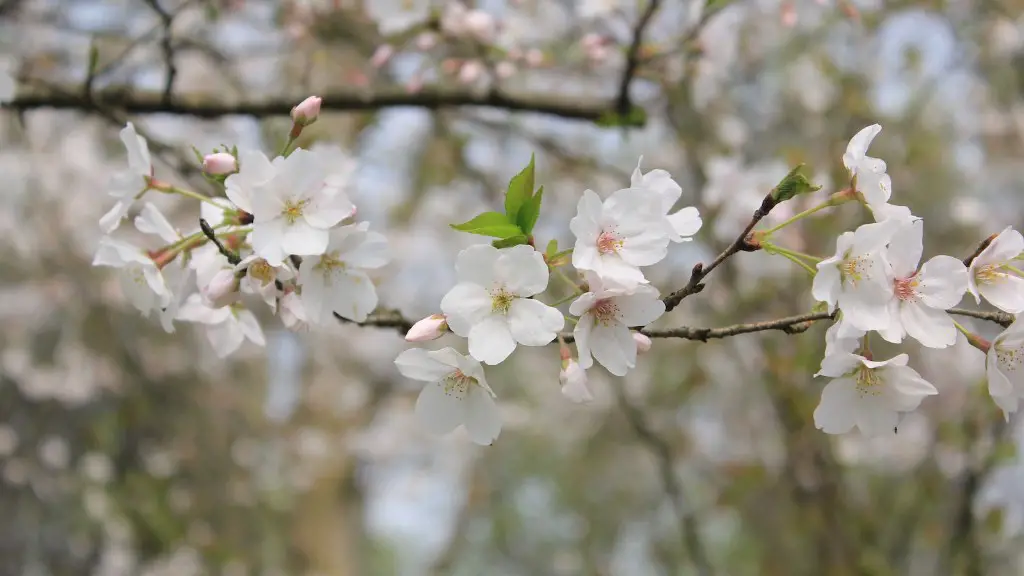It’s a question commonly asked by gardeners and homeowners alike; why are the leaves falling off my apple tree? A variety of factors could be affecting the tree and its foliage. Understanding the problem and taking the necessary steps to address it is important.
Firstly, the tree could be suffering from a nutritional deficiency. Apple trees require nitrogen, phosphorus, potassium, and a variety of micronutrients to stay healthy. If the tree’s soil doesn’t contain an adequate balance of these nutrients, or the roots can’t access them, the tree may be unable to absorb the necessary sustenance, leading to its leaves falling off.
Secondly, disease can also cause a tree’s leaves to fall off. Common apple tree diseases, such as fire blight, powdery mildew, and apple scab, can make it difficult for the tree to uphold its leaves. Keeping your tree healthy by regularly pruning it, mulching, and spraying it with fungicide can help prevent the onset of diseases.
Thirdly, improper irrigation can lead to leaves falling from the tree. Excessive amounts of water can drown the roots and decrease the tree’s root uptake, leading to a hydric deficiency and leaf fall. This is why it’s essential for apple growers to regulate their irrigation, giving trees only the water they need. Drip irrigation is perfect for apple trees.
Fourthly, extreme temperatures can also cause an apple tree’s leaves to wither and fall off. In hot summers, severe droughts can occur, leaving the tree without enough hydration. On the flip side, excess cold or frost can freeze the tree and kill it from below the bark. Both extremes can bring about leaf fall.
Finally, improper pruning can also affect the tree and lead to its leaves dropping off. Trees need to be pruned to shape their crowns, help regulate airflow, and encourage new growth. If a tree isn’t pruned correctly—especially one much too young with little growth—leaves can easily fall off the tree.
Environmental Stresses
Environmental stresses can also cause apple trees to shed their leaves. An overly steep slope, wrong exposure to the elements, or too much shade or sun can all prevent the tree from growing proper foliage. Even in healthy soils, some of these environmental stressors can cause leaf fall.
Additionally, extreme weather events, such as flash flooding and hail, can cause an apple tree’s leaves to quickly wither away. These fast-moving events, such as a thunderstorm or windstorm, can quickly damage a tree and its foliage in short order. Recognizing and addressing the environmental stressors can help prevent any sudden leaf fall.
Pests and Predators
Pests and predators, such as caterpillars, birds, and other animals, can also be responsible for an apple tree’s foliage dropping off. Caterpillars, especially, can quickly damage and eat away an apple tree’s leaves, leading it to be unable to keep them on its branches. In these cases, infestations can require pesticide applications to repel or eliminate the offending pests.
Animals, such as deer and rodents, can also be the cause of leaf fall. These animals feast on young, tender leaves, leading them to quickly become wounded and drop off the tree. In this case, fencing off the tree or engaging in targeted trapping can be effective solutions.
Understand Your Tree
The key to understanding why your apple tree is losing its leaves is to understand your tree. Knowing its history, understanding its health, and observing its environment are all essential to addressing any problems the tree may be having. Long-term solutions that fit the tree’s specific needs will then be achievable.
Correct and appropriate nutrition, taking preventive measures to fight pests and diseases, and giving the tree the proper balance of sunlight, air, and water, are all essential for a healthy, leafy apple tree. Once these problems have been addressed, the tree should soon be able to bounce back and retain its foliar growth.
Diagnosing Tree Illness
Finally, if you’re unable to determine why the tree is losing its leaves, you may need to start diagnosing the tree’s sickness. Signs of an unhealthy tree may include discoloration or dead twigs, changes in the bark, leaf spotting or curling, breaks in the branches, and wilting or yellowing leaves. All these signs can give clues as to what’s causing the tree’s ailments.
If these signs are present, it may be best to consult an arborist or an experienced orchardist to diagnose your tree and recommend a plan going forward. With their help, your apple tree should once again experience adequate growth and retain its foliage.


